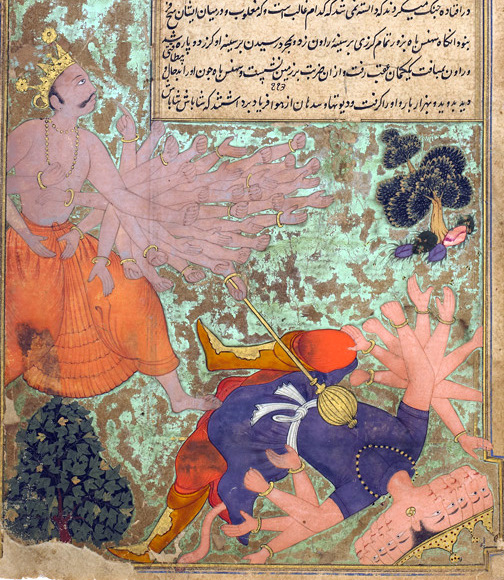|
Eyarkon Kalikama Nayanar
Eyarkon Kalikkama Nayanar, also known as Kalikkamanar, Kalikamba Nayanar, was a King of Haihaya (Eyar), Commander-in-chief of the Chola army, a Nayanar saint, venerated in the Hindu sect of Shaivism. He is generally counted as the 29th in the list of 63 Nayanars. Life The life of Eyarkon Kalikkama Nayanar is described in the ''Periya Puranam'' by Sekkizhar (12th century), which is a hagiography of the 63 Nayanars. He is dated to the 8th century and was a contemporary of Sundarar, one of the most prominent Nayanar saints. Kalikkama was born in Tiruperumangalam (Tirupperumangakalam), Ponni Nadu (region of the river Kaveri). He was a Vellalar by birth, a great devotee of Shiva, the patron god of Shaivism. He was born in the family of Eyars. His title "Eyarkon" means "king of Eyars" or "chief of Eyars". The traditionally served the Chola kings and Kalikkama was the commander-in-chief of the reigning Chola ruler. He served Shiva at the temple in Thirupungur (Thiruppunkur). The ... [...More Info...] [...Related Items...] OR: [Wikipedia] [Google] [Baidu] |
Heheya Kingdom
The Heheya Kingdom (also known as Haihaya, Haiheya, Heiheya sa">हैहय was a kingdom ruled by the Yadava people, who claimed to be descended from Yadu, a legendary king of Chandravamsha lineage. One of the most well known Haihaya rulers was Kartavirya Arjuna. It is believed that the Kingdom was involved with a number of conflicts with neighboring kingdoms, and it is believed that it was ultimately defeated by the Bhargava leader Parashurama. The capital of the Heheya Kingdom was Mahishmati, located on the banks of the Narmada River in present-day Madhya Pradesh. Haihaya clans The Haihayas were an ancient confederacy of five ''gana''s (clans), who claimed their common ancestry from Yadu. According to the ''Harivamsha Purana'' (34.1898), Haihaya was the great-grandson of Yadu and grandson of Sahasrajit.Pargiter, F.E. (1972) 922 ''Ancient Indian Historical Tradition'', Delhi: Motilal Banarsidass, p.87. In the ''Vishnu Purana'' (IV.11), all the five Haihaya clans ... [...More Info...] [...Related Items...] OR: [Wikipedia] [Google] [Baidu] |
Thyagaraja Temple, Tiruvarur
Thyagaraja Temple is a Shiva temple, located in the town of Thiruvarur in Tamil Nadu, India. Shiva is worshiped as Puttridankondar, and is represented by the ''lingam''. Daily poojas are offered to his idol referred to as ''Maragatha lingam''. The main idol of worship is Lord veedhi Vidangar (processional icon) (Thiyagarajar), depicted as a '' Somaskanda'' form .His consort Parvathi is depicted as Kondi. The presiding deity is revered in the 7th century Saiva canonical work, the '' Tevaram'', written in Tamil by saint poets known as the nayanars and classified as '' Paadal Petra Sthalam''. The temple complex covers 30 acres, and is one of the largest in India. It houses nine gateway towers known as ''gopurams''. The tallest is the eastern tower, with four stories and a height of . The temple has numerous shrines, with those of Veedhi Vidangar (Thiyagarajar) and Alliyankothai (Neelothbalambal) being the most prominent. The temple has six daily rituals at various times from 5:30& ... [...More Info...] [...Related Items...] OR: [Wikipedia] [Google] [Baidu] |
Nakshatra
Nakshatra ( sa, नक्षत्रम्, translit=Nakṣatram) is the term for lunar mansion in Hindu astrology and Indian Astronomy. A nakshatra is one of 27 (sometimes also 28) sectors along the ecliptic. Their names are related to a prominent star or asterisms in or near the respective sectors. The starting point for the nakshatras according to Vedas is "Krittika" (it has been argued because the Pleiades may have started the year at the time the Vedas were compiled, presumably at the vernal equinox), but, in more recent compilations, the start of the nakshatras list is the point on the ecliptic directly opposite to the star Spica called ''Chitrā'' in Sanskrit, which would be Ashwinī, a part of the modern constellation Aries, and these compilations therefore may have been compiled during the centuries when the sun was passing through the area of the constellation Aries at the time of the vernal equinox. This version may have been called ''Meshādi'' or the " star ... [...More Info...] [...Related Items...] OR: [Wikipedia] [Google] [Baidu] |

.jpg)